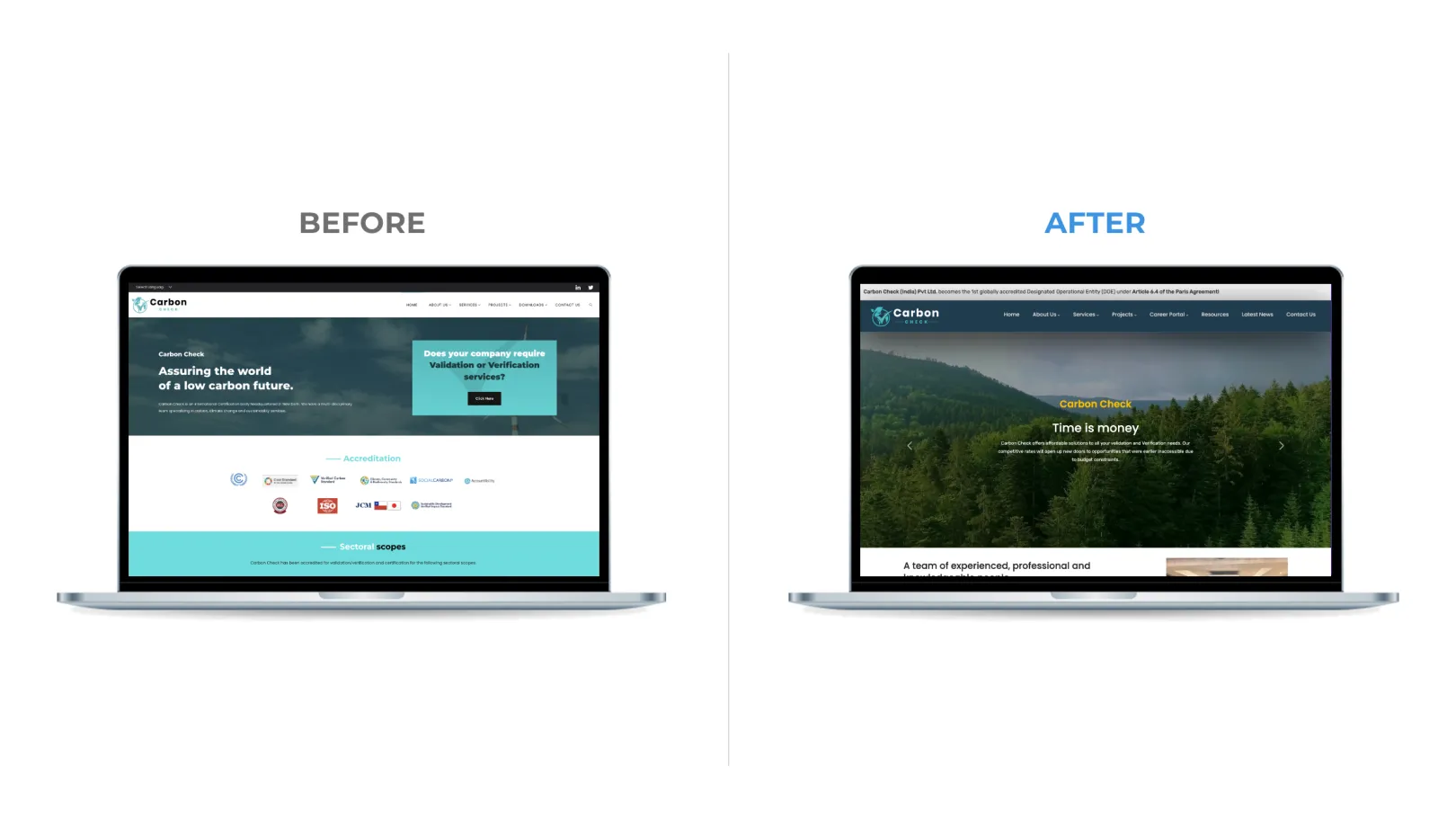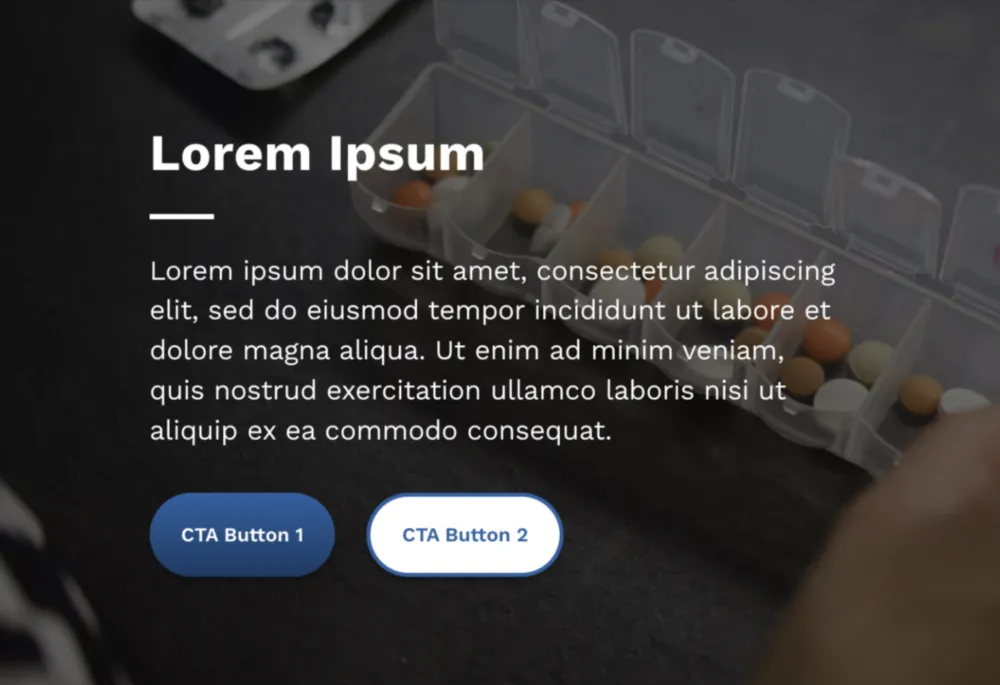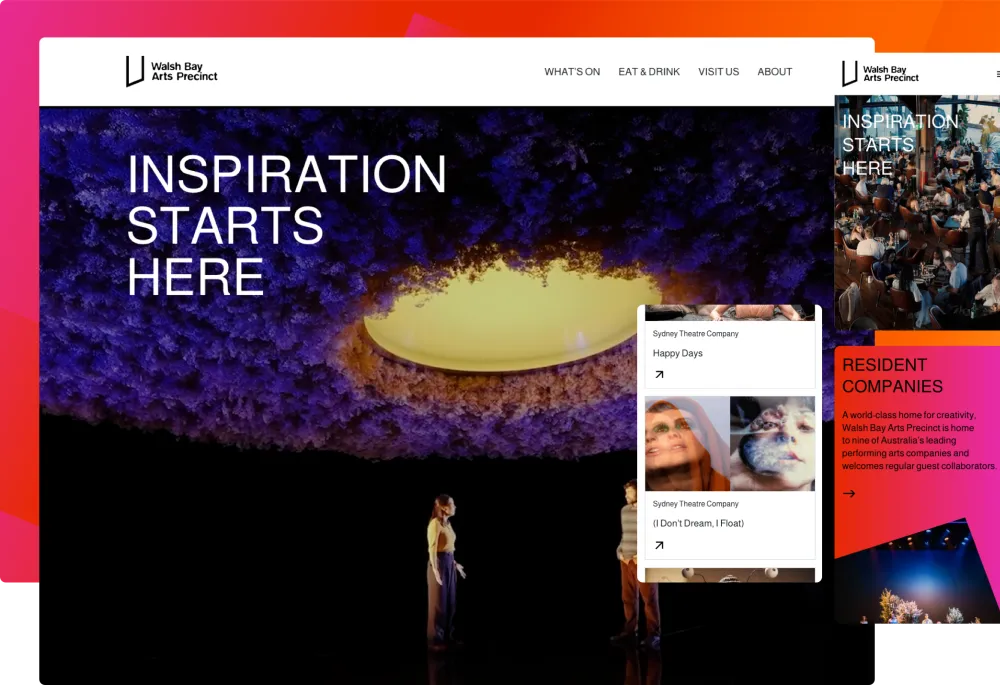Sector(s)
CarbonCheck, a leader in carbon validation and verification services, sought to overcome persistent challenges with its outdated WordPress website. The legacy platform was plagued by limited content governance, low user engagement, and a rigid structure that constrained both scalability and operational efficiency.
To address these issues, OpenSense Labs designed and implemented a modern, scalable solution powered by Drupal 9, emphasizing modularity, structured content, improved workflows, and optimized performance. The result was a measurable uplift in traffic, improved user experience, and a substantial 40% reduction in development costs.
Goals & Requirements:
- Enable real-time content publishing with user-friendly editorial tools
- Reinforce brand credibility through a professional, standards-compliant UI
- Expand functionality to support HR, outreach, and user interaction
- Improve SEO and service visibility
- Establish a scalable architecture that accommodates future growth
Implementation Highlights:
- Migrated from WordPress to Drupal 9
- Deployed a premium ThemeForest template tailored to CarbonCheck’s branding
- Refactored content model with taxonomies, structured types, and block-based layouts
- Integrated features like chatbots, filtered content views, and a custom job module
- Ensured WCAG 2.1 accessibility compliance and responsive design
Outcomes:
|
Metric |
Performance Outcome |
|
Web Traffic |
+12% YoY Growth |
|
Bounce Rate |
7% Decline on L1 Pages |
|
Development Cost |
40% Reduction |
|
User Engagement |
Improved via interactive elements |
|
Maintenance Effort |
Minimal post-handover due to training & modular setup |
A comprehensive technical assessment revealed significant limitations in CarbonCheck’s existing WordPress setup, including:
- Over-reliance on hardcoded templates
- Lack of reusable UI components
- Absence of role-based content workflows
- Non-compliance with WCAG 2.1 accessibility standards
Given these findings, Drupal 9 was selected for its:
- Decoupled architecture
- Granular permission control
- Modular ecosystem for scalability
- Strong support for accessibility, structured content, and editorial workflows
Drupal offered the best balance of performance, flexibility, and future-readiness for the client’s needs.

Technical Specifications
Drupal version:
Key modules/theme/distribution used:
To meet CarbonCheck’s technical and functional needs, the following tools and modules were implemented:
- CKEditor: Empowered non-technical admins with an intuitive WYSIWYG interface
- Amazon SES: Ensured reliable transactional email delivery
- Drupal Views Module: Allowed dynamic entity referencing and filtered content displays.
- jQuery Enhancements: Delivered lightweight interactivity for core UI features
These were chosen for their proven compatibility, community support, and ability to deliver high-value features without extensive custom coding. The modular architecture provided flexibility for future enhancements with low technical debt, while maintaining performance and user experience.



